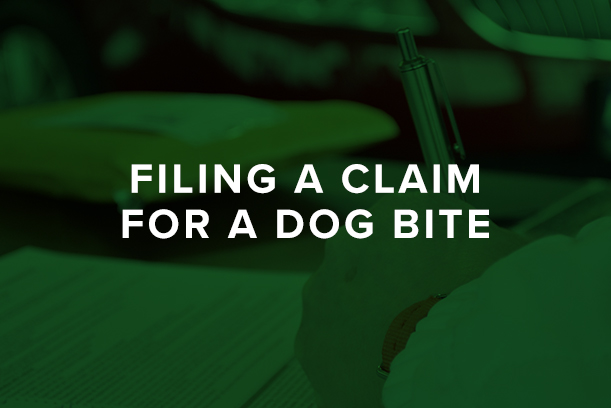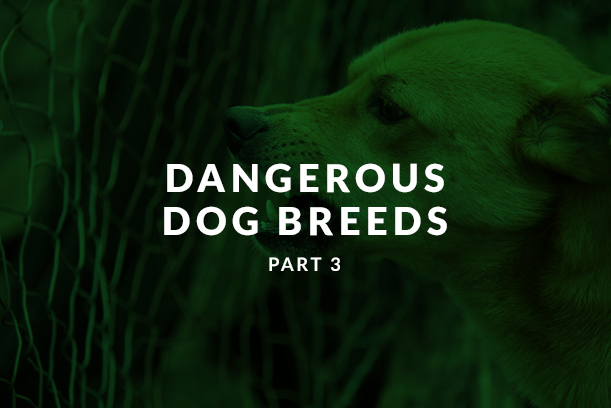
Your Dog Bite Claim Timeline
A dog bite can lead to a confusion of events and processes. Understanding the process for a dog bite claim will help you better navigate through your injury. Know what to do within certain amounts of time to help secure your compensation for any injuries you received during the attack.
Immediately After the Dog Bite
 Directly after a dog attacks, you should obtain medical treatment and notify authorities. Contact both animal control and your local police force and report the dog attack.
Directly after a dog attacks, you should obtain medical treatment and notify authorities. Contact both animal control and your local police force and report the dog attack.
Seeking medical treatment will not only ensure your health, but also create a professional record of the attack that occurred. Reporting the attack to the local authorities will help minimize the risk of the dog attacking someone else. If the owner of the dog is unknown at the time, the report will also ensure the dog is secured for owner identification.
48 Hours After the Dog Bite
After you are medically stabilized, the doctor can create a preliminary medical report of your injuries, which will include the extent of your injuries and the cost related. At this point, you will need to contact a dog bite attorney, such as Scott T. Gegenheimer, who will assist you in pursuing a claim against the owner of the responsible dog.
Louisiana, being a strict liability state, places responsibility of the dog’s actions on the owner, regardless of past behavior. Barring that you did not provoke the dog by trespassing on private property or with animal cruelty, you are entitled to compensation.
Within 1 Week of the Dog Bite
Your attorney will send notification of the claim to the owner of the dog. This notification allows the dog owner time to seek representation and respond to the complaint. Normally, the dog owner will have 15 days to file an answer.
Within 4 Weeks of the Dog Bite
The continuation of the process will depend on the dog owner’s answer to your complaint. If the dog owner chooses to settle the claim outside of court then your attorney will help you receive the compensation you need based on your injuries and future treatment requirements.
If the dog owner decides to take the claim to trial then you and your attorney will compile evidence of the attack. You and your attorney will gather your medical records and police reports, contact any eyewitnesses, request depositions, and gather any additional evidence.
Scheduling a Trial
 Your attorney will proceed to continue the process of the claim by scheduling a court date. As availability differs based on the number of current claims, your court date and length of the trial will vary.
Your attorney will proceed to continue the process of the claim by scheduling a court date. As availability differs based on the number of current claims, your court date and length of the trial will vary.
When the trial concludes, you will be awarded your monetary compensation or the dog owner will be found not at fault. If you wish to challenge the court on the ruling, you may file an appeal.
A Reminder for Dog Bite Injuries
Louisiana allows you to file a personal injury claim for one year after the incident. It is best to file the claim as soon as possible in order to preserve evidence and get the compensation you need for your injuries. You also do not have to wait to file a claim until you are finished receiving treatment.
Filing a dog bite claim quickly and getting assistance from a personal injury attorney will help ensure you are compensated for your injuries. Call Scott T. Gegenheimer today for assistance in your dog bite incident.
This site is intended purely as a resource guide for educational and informational purposes and is not intended to provide specific legal advice. Any information provided on this site should not be used as a substitute for competent legal advice from a professional attorney in your state. The use and receipt of the information offered on this site is not intended to create, nor does it create, an attorney-client relationship. The content of an e-mail sent to Scott T. Gegenheimer Attorney at Law or any of its attorneys will not create an attorney-client relationship and will not be treated as confidential.









 ictim to undergo long-term treatment. Those attacked may have to consider reconstructive or orthopedic surgery and physical therapy to regain full function of their muscles and features.
ictim to undergo long-term treatment. Those attacked may have to consider reconstructive or orthopedic surgery and physical therapy to regain full function of their muscles and features.


















